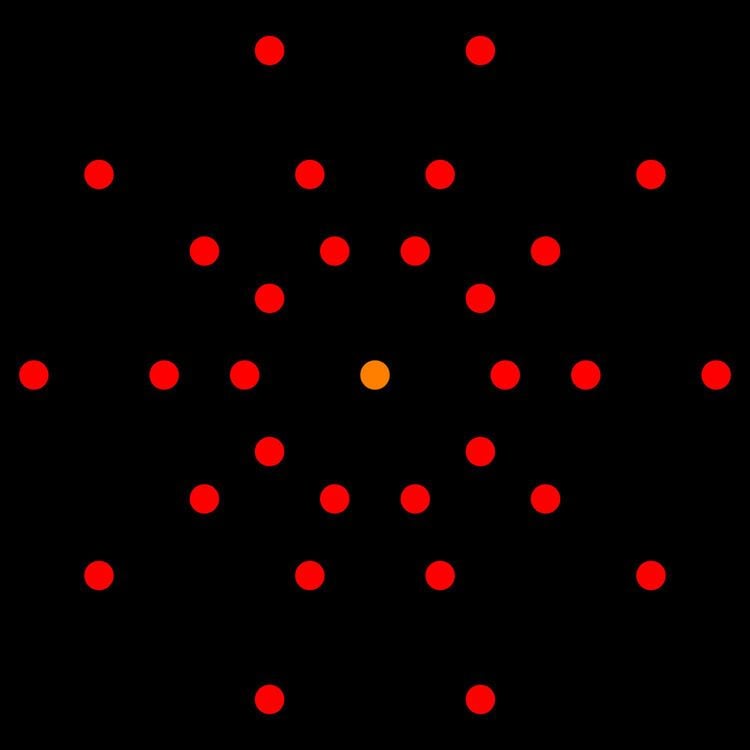 | ||
In five-dimensional geometry, a 5-cube is a name for a five-dimensional hypercube with 32 vertices, 80 edges, 80 square faces, 40 cubic cells, and 10 tesseract 4-faces.
Contents
It is represented by Schläfli symbol {4,3,3,3} or {4,33}, constructed as 3 tesseracts, {4,3,3}, around each cubic ridge. It can be called a penteract, a portmanteau of tesseract (the 4-cube) and pente for five (dimensions) in Greek. It can also be called a regular deca-5-tope or decateron, being a 5-dimensional polytope constructed from 10 regular facets.
Related polytopes
It is a part of an infinite hypercube family. The dual of a 5-cube is the 5-orthoplex, of the infinite family of orthoplexes.
Applying an alternation operation, deleting alternating vertices of the 5-cube, creates another uniform 5-polytope, called a 5-demicube, which is also part of an infinite family called the demihypercubes.
The 5-cube can be seen as an order-3 tesseractic honeycomb on a 4-sphere. It is related to the Euclidean 4-space (order-4) tesseractic honeycomb and paracompact hyperbolic honeycomb order-5 tesseractic honeycomb.
Cartesian coordinates
The Cartesian coordinates of the vertices of a 5-cube centered at the origin and having edge length 2 are
(±1,±1,±1,±1,±1),while this 5-cube's interior consists of all points (x0, x1, x2, x3, x4) with -1 < xi < 1 for all i.
Images
n-cube Coxeter plane projections in the Bk Coxeter groups project into k-cube graphs, with power of two vertices overlapping in the projective graphs.
Related polytopes
This polytope is one of 31 uniform 5-polytopes generated from the regular 5-cube or 5-orthoplex.
